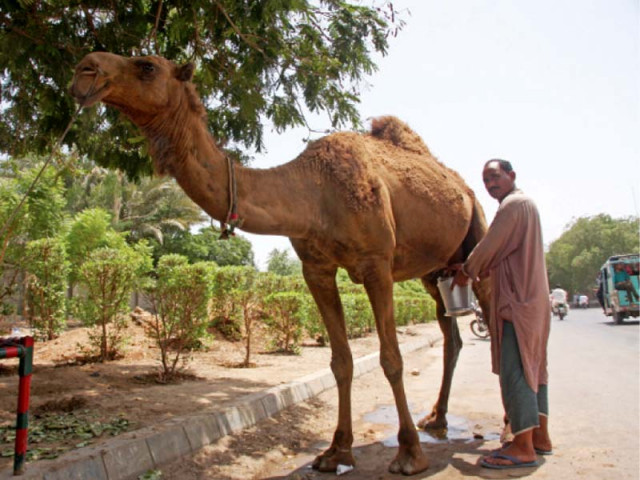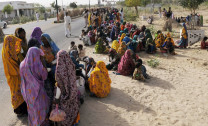Camel milk: Better research, marketing can enhance production, says experts
Symposium highlights need for research use, herders' training

Experts say that existing population of camels in Pakistan is around one million, and the number is decreasing due to the diminishing use of the animal. PHOTO: FILE
"The academia and researchers should acquire and transfer the knowledge [about modern farming practices] to camel herders," said the varsity's vice-chancellor Dr Mujeeb Sahrai. He pointed out that 62 per cent land in Sindh consists of arid zones where livestock is the main source of livelihood for locals.
Crackdown announced: Task force looking to stop sale of substandard milk
Camels are abundant in the coastal, desert and mountainous regions in Sindh. US-based livestock expert, Dr Mushtaq Memon, said during his brief research on a desert in Sanghar district, he found huge potential of harnessing camels for breeding and milk production.
"In big cities such as Karachi, camel milk is being sold at around Rs400 per kilogramme but in the poor rural areas, herders sell it for Rs50 [per kg]," he said. According to him, camel owners lack awareness of methods that will increase milk production, ensure preservation and to market the product.
"Due to a lack of a milk marketing system in desert areas, camel herders don't take on improved camel breeding and milk production techniques," he observed. Memon said the use of camels for commercial milk production will also help preserve the animal, some breeds of which are becoming extinct in several parts of Sindh.
The symposium recommended research on viral respiratory syndrome, zoonotic disease and brucellosis that hinder productivity of camels. It also suggested promotion of para-veterinarian diploma courses and camel teaching with the introduction of special curricula to empower the youth, both men and women, to improve their livelihood, besides underscoring the need for transfer of technology.
Favouritism?: Dairy farmers protest milk prices
Dr Pershotam Khatri, a German livestock expert who was also the secretary of the symposium, claimed that public-private partnership programmes can benefit camel herders. He said rural women folk involved in camel milking should be trained about milk production and preservation as well as marketing methods.
The US, UAE, Australia and some European countries have been applying modern practices and technology in this field. The university's teachers and students were asked to learn from developed countries and transfer that knowledge to herders.
Memon propsoed that the university should strengthen academics linkages with relevant faculties and scientists in Germany, US, UAE and Australia, as well as with varsities in Punjab and Balochistan.
Dr Ghulam Raza Bhatti, executive director of the Higher Education Commission of Pakistan, estimated that the existing population of camels in the country stands at around one million. However, he said, the number is fast declining due to the diminishing use of the animal.
Several other experts from Pakistan and abroad shared their views on the subject during the four-day symposium.
Published in The Express Tribune, December 27th, 2015.



















COMMENTS
Comments are moderated and generally will be posted if they are on-topic and not abusive.
For more information, please see our Comments FAQ